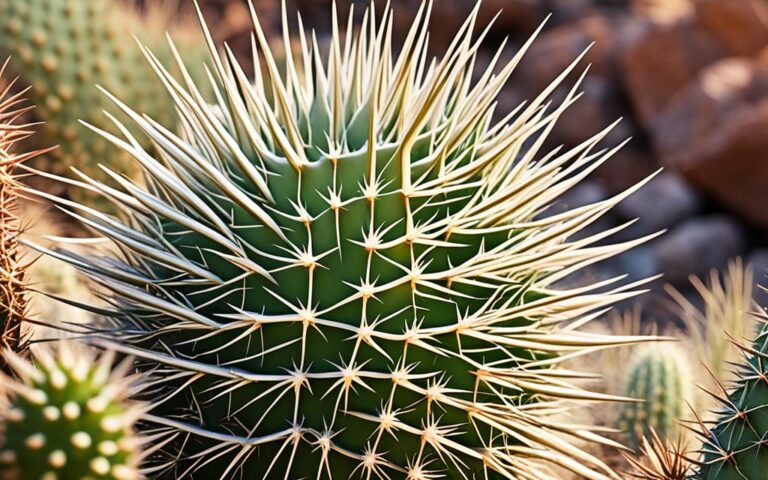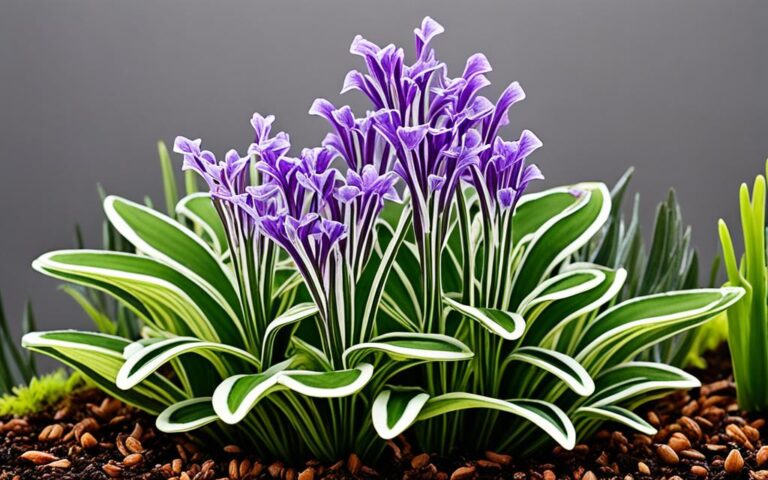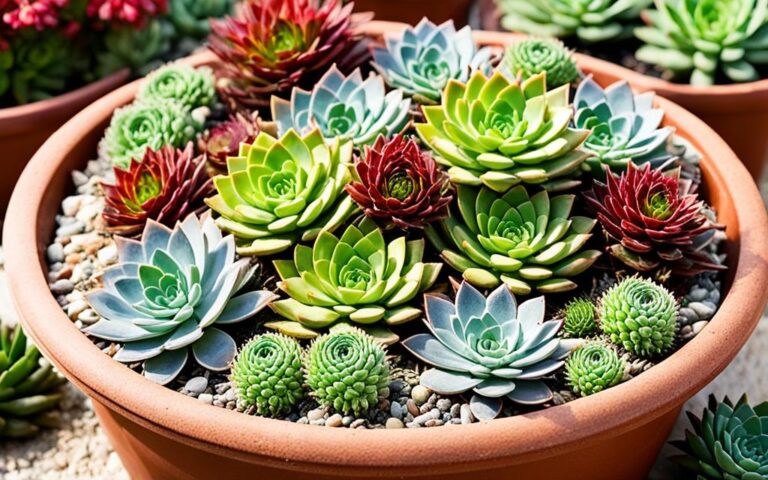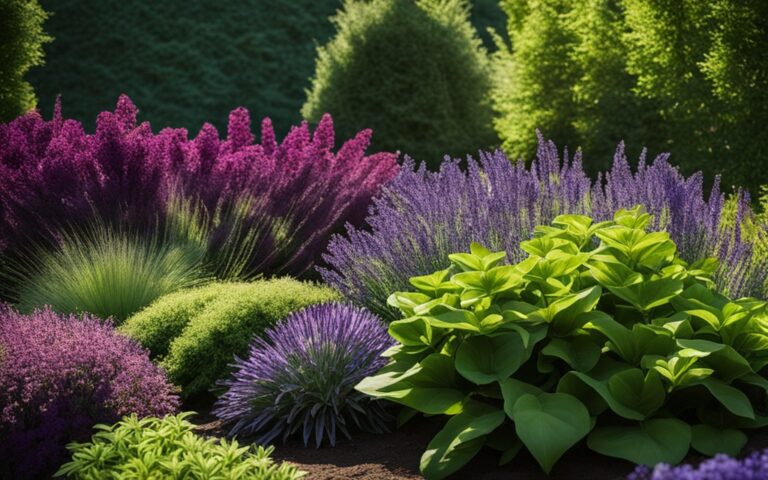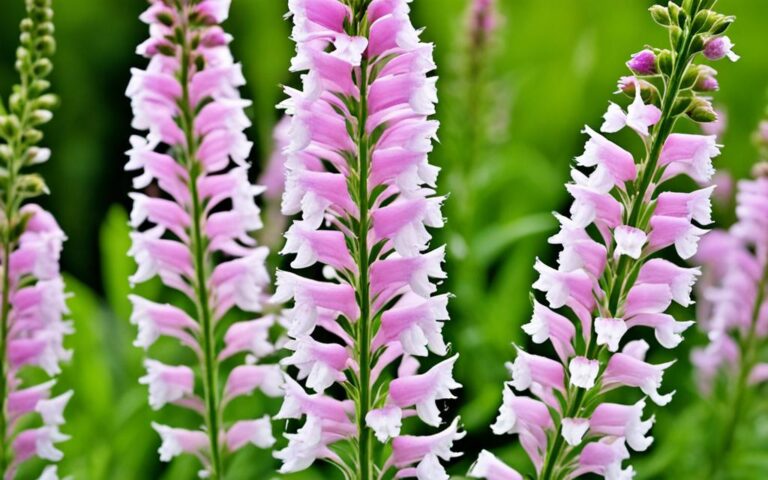Ruda Plant: Uses and Care for This Medicinal Herb
Did you know the ruda plant, also called rue or Ruta graveolens, has been used for centuries in spiritual and ritual practices? This herb, from the Mediterranean, has a long history. It’s now popular for its health benefits and many uses.
We’ll look into the ruda plant’s uses, care, and history. This article is for those interested in adding this unique herb to their lives. From herbal remedies to cooking and spiritual traditions, the ruda plant is interesting and important today.
Key Takeaways
- Ruda plant, also known as rue or Ruta graveolens, is a versatile medicinal herb with a long history of traditional uses.
- The ruda plant is native to the Mediterranean region and has gained popularity for its potential health benefits and diverse applications.
- Ruda plant has been used in spiritual and ritual practices for centuries, particularly in Santeria, Hoodoo, and West-African traditional religions.
- Ruda plant is utilized in herbal remedies, cooking, and as a natural pest control solution due to its strong, sweet scent.
- The ruda plant contains a variety of compounds, including alkaloids, coumarins, and volatile oils, which contribute to its medicinal properties.
Introduction to the Ruda Plant
The ruda plant, or Ruta graveolens, is an evergreen shrub in the Rutaceae family. It has been used for centuries in traditional medicine and cooking, especially in the Mediterranean and Western Asia. Its blue-green leaves and yellow flowers make it stand out. People have valued it for many uses.
This plant comes from the eastern Mediterranean but is now found all over the world. It can handle high heat and drought, making it great for gardens. It grows to about 50 cm (1.6 feet) tall and can even survive in cold temperatures down to -28°C (-18.4°F).
It’s easy to grow from seeds, dividing, or cutting stems. People use its leaves, stems, and flowers for medicine and to keep pests away. But, it has compounds that can irritate the skin, so use it carefully, especially in large amounts.
“Rue (Ruta graveolens) was a popular medicinal herb during the Roman Empire and the Middle Ages.”
Even with its risks, the ruda plant is known for its health benefits. It may help with arthritis, joint pain, headaches, and sleep issues. Always talk to a doctor before using ruda for health reasons.
Common Names and Overview
The ruda plant, also known as common rue, garden rue, or Ruta graveolens, is a versatile herb. It has a rich history and diverse uses. This evergreen perennial shrub is native to the Balkan Peninsula. It is recognized by its distinctive bluish-green leaves and small yellow flowers.
Other Names for Ruda Plant
- Herb-of-grace
- Herbe à la belle-fille
- Herbe de grâce
- Herbe de la rue
- Herbygra ss
- Raute
- Ruda de castilla
- Rue fétide
- Rue des jardins
- Rue officinale
- Rue puante
Overview of Ruda Plant
The ruda plant is scientifically known as Ruta graveolens and is part of the Rutaceae family. It grows to be 2-3 feet tall, with a bushy, compact shape. The plant’s leaves have a unique aroma when crushed, which adds to its many uses.
“Rue was a common cooking herb for the Romans and commonly used in a spicy seasoning paste along with garlic, hard cheese, coriander, and celery seeds with rue leaves.”
Rue has been used for medicinal purposes in the past. It was recommended as an antidote for snake bites when mixed with oleander. The refined oil of rue was also seen as an emmenagogue and abortifacient. However, its use in these ways is now discouraged due to safety concerns.
Traditional and Modern Uses
The ruda plant has a long history of use across many cultures. It was used for treating many health issues like digestive problems, heart issues, breathing problems, and issues with the nervous system. In Roman times, people used it in cooking and made special seasonings with it. They mixed it with garlic, hard cheese, coriander, and celery seeds.
But, its use in cooking has decreased over time. This is because people’s tastes have changed. Yet, some Italian families still use it in their cooking. In Ethiopia, it’s still a key herb in cooking and is added to coffee drinks. This shows it’s still important in some places.
Ruda is also liked for its beauty in gardens. It grows well and doesn’t need much care. It also attracts butterflies. People use it to keep away caterpillars, deer, and rabbits.
Today, ruda is still used in herbal remedies, cooking, making fragrances, and cosmetics. But, there are warnings about using it. It can cause skin problems and is not safe for pregnant women, young kids, or people with liver or kidney issues.
| Traditional Ruda Plant Uses | Modern Ruda Plant Applications |
|---|---|
|
|
“Pliny the Elder described 84 remedies made with rue in his work Naturalis historia.”
The ruda plant has a long history of use, but its modern uses are changing. Today, it’s used in both traditional and new ways. This shows its ongoing importance in health and cooking.
Potential Benefits of Ruda Plant
The ruda plant, also known as Ruta graveolens, may have many health benefits. However, we need more studies to be sure. People have used it for digestive problems like not wanting to eat, upset stomach, and diarrhea. It’s also been used for heart issues, such as heart racing and hardening of the arteries.
Digestive Benefits
The ruda plant has compounds that might ease muscle spasms and reduce swelling. This could help with digestion. Studies suggest that its extracts can help control digestive processes by affecting cell connections.
Cardiovascular Benefits
Ruda plant may help the heart and blood vessels thanks to its antioxidants and rutin. Rutin can fight against harm to the nervous system and reduce oxidative stress. These are linked to heart problems. The plant’s anti-inflammatory effects could also help with heart health.
Even though the ruda plant looks promising for digestion and the heart, be careful. Talk to a doctor before using it, as too much can be harmful.
Anatomy and Botanical Features
The ruda plant, known as Ruta graveolens, is an evergreen shrub. It is a perennial that grows year after year. This plant is native to Europe and the Mediterranean. It now grows in many places around the world.
Leaves, Stems, and Flowers
The leaves of the ruda plant are deeply divided, making them stand out. They have a strong smell that adds to the plant’s unique character. The stems are woody and spread out, holding up the leaves and flowers.
The flowers are small and yellow, growing in clusters. They add color to the plant, matching its blue-green leaves.
| Ruda Plant Botanical Characteristics | Description |
|---|---|
| Leaf Appearance | Deeply divided, blue-green foliage with a strong, aromatic fragrance |
| Stem Structure | Woody and branching |
| Flower Characteristics | Small, yellow flowers arranged in clusters |
The ruda plant stands out because of its unique leaves, stems, and flowers. These features make it easy to tell apart from other plants.
Ideal Growing Conditions
The ruda plant, also known as rue, does best in certain conditions. Gardeners should focus on the plant’s light, temperature, humidity, and soil needs for the best growth.
Light, Temperature, and Humidity Requirements
The ruda plant needs full to partial sun for at least 6-7 hours a day. It likes temperatures around 70°F (21°C). This plant is perfect for warm, dry places and can handle low humidity.
Soil Preferences and Watering Needs
The ruda plant likes soil that drains well and is poor in nutrients. It does well in slightly acidic to slightly alkaline soil and can survive with little water. Water it deeply every three weeks to avoid root rot.
Knowing the ruda plant’s growing requirements helps gardeners create the best conditions. Following ruda plant care guidelines ensures the plant grows well and lasts long in the garden.
ruda plant Propagation Methods
The ruda plant, also known as rue or Ruta graveolens, is easy to spread through seeds and cuttings. It gives gardeners and growers many ways to grow and increase its numbers.
Growing Ruda from Seed
Ruda seeds are easy to collect and save for planting. They germinate best at 10 to 18°C (50 to 64°F) and take about 2 to 3 weeks to sprout. To grow ruda from seed, plant them 0.5 to 1cm (1/4 to 1/2 inch) deep and 30cm (12 inches) apart in the garden.
Propagating Ruda from Cuttings
Using stem cuttings from a mature ruda plant is a fast way to spread it. The best time for cuttings is in the fall. Cut 4-6 inch stem pieces, remove the lower leaves, and plant them in moist soil. With the right care, these cuttings will root and grow into new plants.
Both ruda plant propagation methods, from growing ruda from seed or ruda plant cuttings, help gardeners grow this useful herb. Knowing these methods lets you easily add ruda to your garden or increase its spread.
| Propagation Method | Advantages | Challenges |
|---|---|---|
| Seed Propagation |
|
|
| Stem Cuttings |
|
|
Care and Maintenance
Maintaining the ruda plant is key to its health and beauty. Proper pruning and training keep it looking great. It’s also important to watch out for pests and diseases.
Pruning and Training Techniques
Pruning the ruda plant after it flowers is crucial. It makes the plant fuller and stops it from getting too tall. The best time to prune is in late spring or early summer, when new growth starts.
Training the ruda plant with stakes or trellises is helpful too. It keeps the plant upright and tidy. This also helps with air flow and light, which keeps the plant healthy.
Pest and Disease Management
The ruda plant is usually pest and disease resistant. But, it can get fungal infections like powdery mildew or leaf spot in damp places. Aphids and other insects that eat sap can also be a problem.
To keep these issues at bay, keep your garden clean and well-ventilated. Use organic pest control like beneficial insects or neem oil. Check your plant often and fix any problems fast to keep it healthy.
| Pest/Disease | Symptoms | Treatment |
|---|---|---|
| Powdery Mildew | White, powdery growth on leaves and stems | Apply a baking soda or neem oil solution |
| Aphids | Small, sap-sucking insects on leaves and stems | Use insecticidal soap or introduce beneficial insects |
| Leaf Spot | Brown or black spots on leaves | Remove affected leaves and improve air circulation |
By following these ruda plant care tips, gardeners can keep this herb healthy and useful for a long time.
Culinary Uses of Ruda Plant
The ruda plant, also known as rue, has a long history in traditional Mediterranean cooking. Its leaves and seeds add a unique bitter and slightly numbing taste to dishes.
Before, rue was a key part of spice mixes and sauces. It was often mixed with other herbs and spices. Now, its use has dropped due to new tastes. Yet, it’s still used in some Ethiopian coffee and Italian and French recipes.
Rue is not as popular in modern Western cooking. But, it’s still important in the cooking traditions of many cultures. It adds depth and complexity to dishes, making it great for adventurous cooks and chefs.
“Rue (Ruta graveolens) is associated with meanings such as ‘to regret,’ sadness, and bitterness in biblical writings and literature.”
Rue’s strong taste might not be for everyone. But, its history and potential for new flavors make it interesting. Using it in traditional recipes or modern dishes can add new tastes and textures.
When trying the ruda plant as a flavoring, remember it can be toxic in large amounts. Use it safely and properly to enjoy its unique taste.
Safety Precautions and Side Effects
The ruda plant, also known as rue or Ruta graveolens, has a long history of use in medicine. But, it’s important to be careful when handling or eating this plant. It can be dangerous.
Pregnancy and Breastfeeding Considerations
Don’t use the ruda plant if you’re pregnant. It can cause the uterus to contract and increase the risk of miscarriage. Nursing moms should also stay away from it. There’s not enough info on its safety during breastfeeding.
Interactions with Medications
The ruda plant can affect how some medicines work, especially those that make you more sensitive to the sun. This can lead to sunburn, blisters, and rashes. Always talk to a doctor before taking the ruda plant with any other drugs.
The ruda plant can also cause side effects like stomach problems, mood changes, sleep issues, dizziness, and harm to the kidneys and liver. Eating a lot of the fresh leaves or oil can be very dangerous.
| Potential Side Effects of Ruda Plant | Severity |
|---|---|
| Stomach irritation | Moderate |
| Changes in mood | Moderate |
| Sleep problems | Moderate |
| Dizziness | Moderate |
| Kidney damage | Severe |
| Liver damage | Severe |
Knowing these safety tips and possible side effects is key when thinking about using the ruda plant. Always talk to a healthcare professional before adding it to your diet or medicine routine.
Historical and Cultural Significance
The ruda plant has a long history and is deeply meaningful in many cultures. In the Bible, it’s called “peganon.” The Romans used it for food and medicine. People also used it to keep away the plague and believed it could protect against witches.
This led to its use in Catholic Church blessings. The name “Ruta” comes from the Greek word “to set free,” showing its use as an antidote. This history shows how important the ruda plant has been in many traditions.
Ancient Greeks and Romans linked Rue with gods like Diana, Apollo, and Zeus. In medieval Europe, it was thought to fight the plague and protect against witchcraft. It’s also been part of traditional medicine in Egypt, Arabia, and India.
Rue is not just for medicine and spirituality. It’s tough and doesn’t need much water, making it great for dry landscaping. It also helps keep roses and raspberries safe from pests. Plus, you can use its leaves in cooking and tea.
“Rue has been used in traditional medicine practices across different cultures, including Egyptian, Arabic, and Indian Ayurvedic medicine.”
But, eating too much rue can be harmful. In Mexico, it’s used for spiritual cleansing. In the Middle Ages, it was against witches and bad smells.
The ruda plant’s history and cultural importance show its lasting impact. From ancient times to now, this herb has a special place in many cultures around the world.
Conclusion
The ruda plant, also known as Ruta graveolens, is a versatile and historically significant herb. It has kept its importance over the centuries. This plant offers many uses, from health benefits to culinary and aromatic applications.
Gardeners, herbal enthusiasts, and culinary professionals can learn a lot from the ruda plant. They can use it in many ways. Its long history in traditional and alternative medicine shows its lasting value.
The ruda plant is great for digestion or adding flavor to food. It’s also good for gardens because it grows well and keeps insects away. By learning about the ruda plant, people can see its wide impact.

